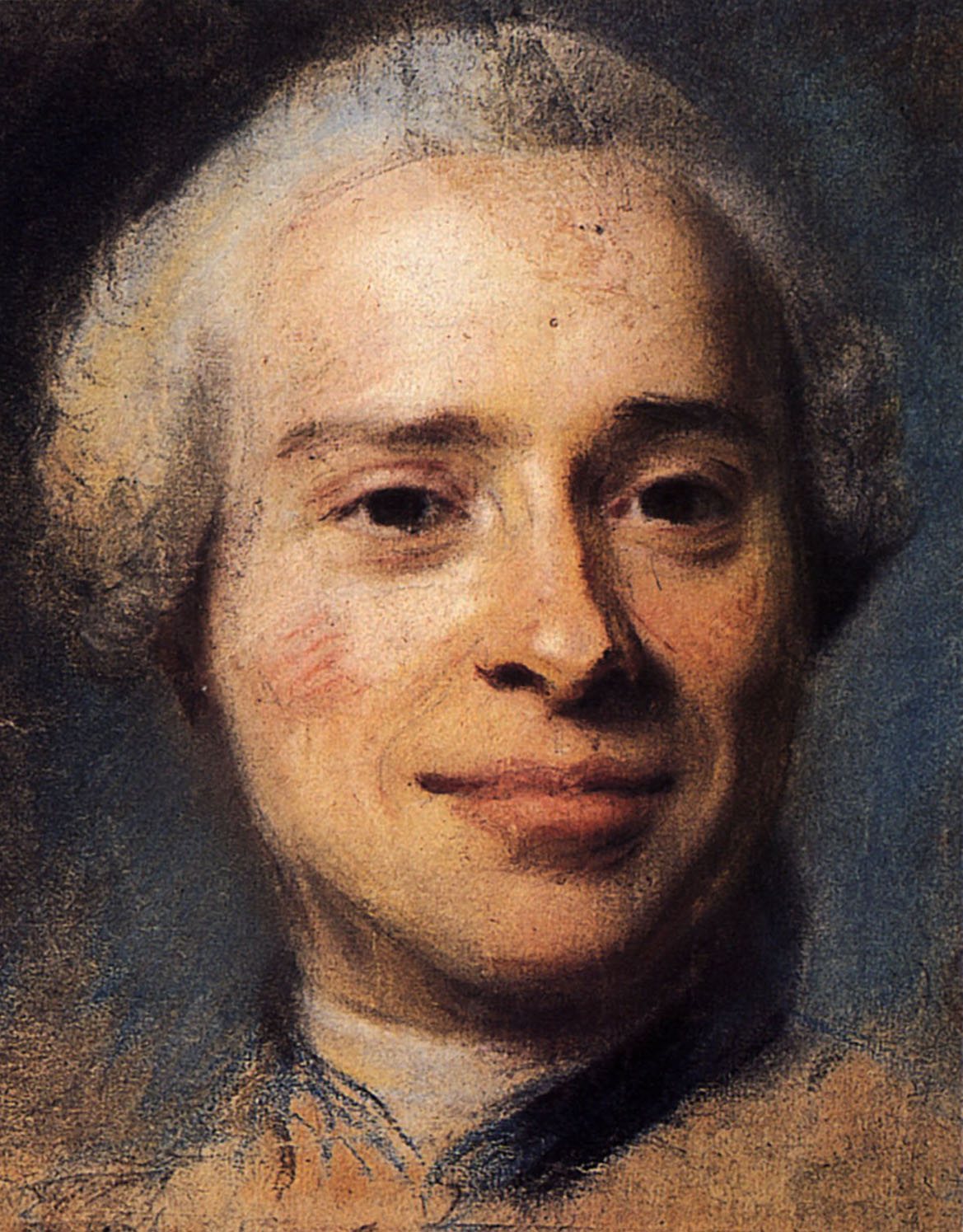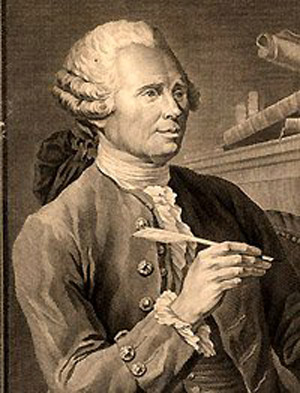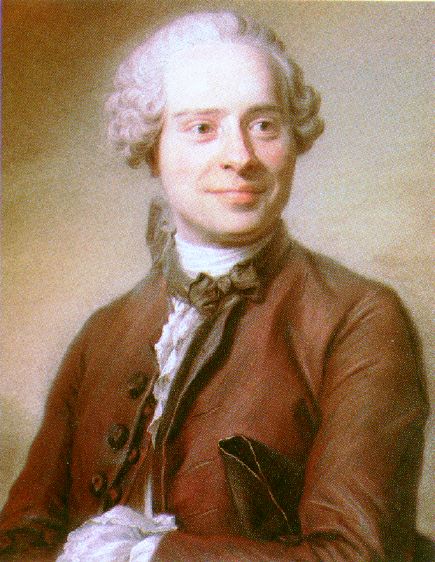Jean le Rond d'Alembert
Jean -Baptiste le Rond [' ʒɑ ba'tist lə ʁɔ dalɑ'bɛ ː ʁ ] called D' Alembert, ( born November 16, 1717 Paris, † October 29, 1783 ibid ) was one of the most important mathematicians and physicists of the 18th century and a philosopher of the Enlightenment. Together with Diderot was the editor of the Encyclopédie reconnaissance. He himself mainly dealt with the mathematical part.
Life and work
D' Alembert was a bastard son of General Louis Camus Destouches (1668-1726) and the later Salonnière the Marquise de Tencin born. His mother put him off at the Church of St -Jean- le -Rond de Paris. Pierre Guérin de Tencin, was a maternal uncle and Roman Catholic Cardinal and Archbishop of Embrun at the same time (1724-1740) and Lyon ( 1740-1758 ).
D' Alembert was of Madame Rousseau, born Etiennette Gabrielle Ponthieux (ca. 1683-1775 ), the wife of the master glazier Alexandre Nicolas Rousseau added as a foundling and remained there until the age of 48 years. However, the biological father gave him a comprehensive education and training.
With twelve years he joined the Collège des Quatre Nation, and closed it in 1735 with the baccalauréat s clipart from. Later he studied at the Ecole de Droit, first law and then medicine, before he finally turned to self-taught mathematics and physics. His mathematical works were his main Opuscules Mathématiques in nine volumes. D' Alembert was interested in, among other things for music. He published in 1752 the Éléments de la musique théorique et pratique (elements of theoretical and practical music) and two years later Réflexions sur la musique en général et sur la musique française en particulier ( reflections on music in general and French music in particular).
His fame gave him access to the Parisian " salon". He was a regular guest at Madame de Deffand and Julie de Lespinasse, with whom he lived together from 1764 on. There he met David Hume and Condorcet know.
D' Alembert was together with Denis Diderot editor of the Encyclopédie, the monumental work of the Enlightenment in the western world of states. The bookseller André Le Breton charged him and Diderot, the Cyclopaedia of Ephraim Chambers translate. This is the project of the Encyclopédie, which was very actively supported by Voltaire developed. With it, he concluded a close friendship that was entertained by a lively correspondence.
His contributions to the Encyclopédie, published 1751-1780, were varied. He wrote the Discours préliminaire in the first volume, a kind of " manifesto of the Enlightenment", and wrote over 1570 signed and unsigned about 210 other posts that mainly originate from the field of natural sciences. He was also the ( Geneva ) contributed by polemical prefaces and important articles like Dictionnaire Genève or the ideological direction of the work.
D' Alembert led correspondence with "enlightened rulers " as Frederick II of Prussia and the Russian Empress Catherine the Great. But his distrust of the rulers was always awake. In his Essai sur les gens des lettres et sur les grands ( attempt an essay about the writing people and the great writers ), he compared the 1759 outlook of the nobility with which the thinker. D' Alembert was also a brilliant Tacitus translator. He was both a member of the Prussian Academy of Sciences, the Académie des Sciences and the Académie française, the Secretary-General on lifetime he was in 1772. Most recently, he lived as a pensioner of Frederick II of Prussia.
He was a member of the Paris Masonic Lodge Les Neuf Sœurs.
D' Alembert died on October 29, 1783 at the age of 65 years to a urinary bladder disease.
Founder of the mathematical continuum physics
According to him, the D' Alembert's principle of mechanics is named. The d' Alembert principle of classical mechanics allows the equations of motion of a mechanical system with constraints.
He worked in the field of function theory, sparked in 1747 today named after him (one-dimensional ) wave equation of the vibrating string and thus became the founder of the mathematical continuum physics. Similarly, the D' Alembert operator goes for the Klein-Gordon equation of quantum mechanics back to him. D' Alembert also worked in the field of convergence of series and found the ratio test, which is also called after him D' Alembert criterion. Important here is the reduction method of d' Alembert. Further works were devoted to the theory of probability; a popular, albeit useless game system for the roulette game, the progression d' Alembert, is attributed to him.










_-_Jean_le_Rond_d%2527Alembert_(1717-1783).jpg)